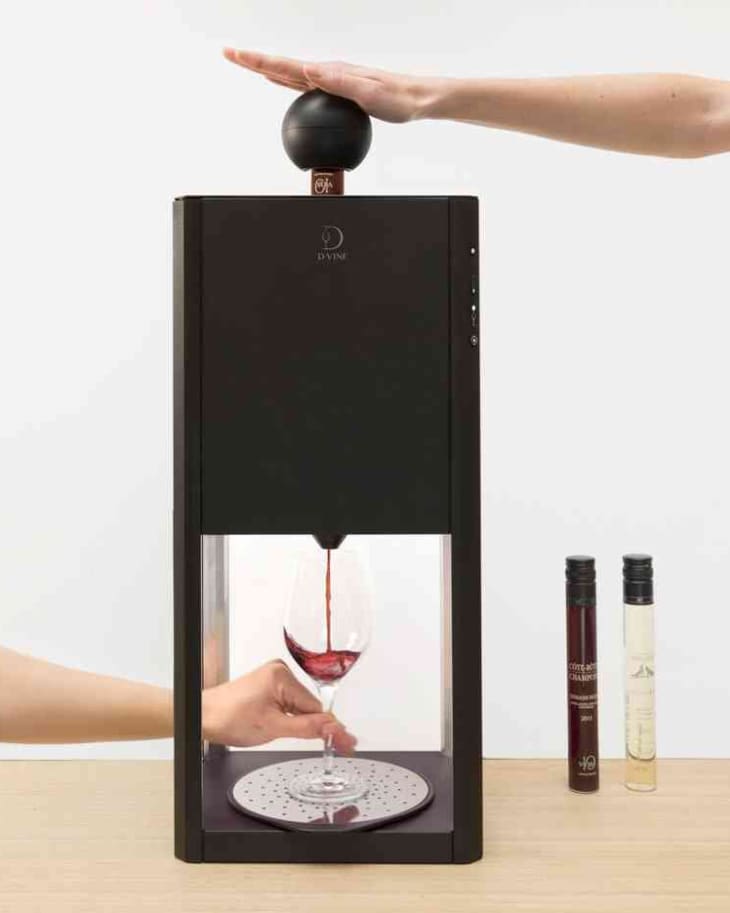3 Things Home Cooks Would Love at the Consumer Electronics Show
The Consumer Electronics Show, the world’s largest consumer electronics show, is well-known for its innovations in areas like smartphones, home automation, televisions, and cars. But CES is also a giant playground for home cooks.
Here are the three things home cooks would love at CES.
1. Drinks Made Easy
Three of the machines brewing up buzz at CES are meant to make drinking at home easier and more fun.
First up, there’s the D-vine machine (not yet on sale in the United States). It’s pretty simple to use: Simply take a vial of wine and turn it upside down into the top of the machine. An embedded chip in the vial tells the machine what type of wine it is. Then, the machine chills the wine (red or white) to the optimal temperature, aerates it, and dispenses it into a glass below. The entire process takes at most a minute, and each glass tastes like it’s poured from a bottle that’s been perfectly decanted for a couple hours. The best part? No old-tasting wine from unfinished bottles found in the back of the fridge.
Next, the Keurig Kold machine ($369, on sale now). From the company that redefined coffee in the home kitchen comes a machine that has nothing to do with coffee. In this case, pods are either soda, mixed drinks, or something in between. The machine uses a chilled aluminum core to flash-chill the drinks. And it one-ups the once-popular “SodaStream” because it doesn’t require a separate canister for carbonation. The carbonation is built into each pod, which cost about $1 each.
My favorite thing, though, is the Somabar ($429, shipping this year). This thing is ingenious, and seeing it in action yields one of those “Why didn’t I think of this?” feelings. Think of it as a robotic bartender. The machine has six water bottle-sized containers, where you add your favorite spirits and mixers. From your smartphone, you simply tap the type of drink you want and the machine instantly mixes and dispenses it. Don’t know what type of mixers you need? It tells you. Want to share recipes with friends? It’s in the app. Want to customize your beverage? Again, it’s in the app. Like I said, ingenious.
2. Home Automation
Within the past five years, home cooks have become used to the idea that parts of their kitchen can be more high-tech. It seems like ancient history — the year was 2011 — when Kenmore debuted an oven that pairs with a smartphone. We’ve come a long way in just a few years.
One of the leaders at CES this year is Whirlpool. It is debuting its “Smart Kitchen Suite with CareSync.” It links together the three most commonly used appliances: refrigerator, dishwasher, and stove. One-touch buttons have several functions. For example, “Party Mode” activates a Fast Ice and Fast Cool function for snacks. Observing the Sabbath? Hit “Sabbath Mode,” and at sunset the oven will heat to a steady temperature and lights and sounds on all three appliances will turn off.
All of this, of course, is controlled through an app. It also contains functions that alert you when the dishwasher is done, and if you’re running low on dish detergent, it will automatically order more through Amazon.
Expect a lot more innovation to come. By 2020, Bosch estimates about 230 million homes worldwide will have some sort of home automation technology.
3. e-Calorie Counting (and More)
The people behind the soon-to-be released DietSensor app ($10 to 20 month, plus $249 for device) explained to me several times how it works — and I still don’t understand it completely.
Here are the basics: It all starts with a handheld, portable food scanner built by a company called SCiO ($249, not yet for sale in the U.S.). It uses infrared technology to detect the molecular composition of food. (Place it on a piece of white bread and it detects it; switch it to a New York strip steak and it will be able to tell that it’s not a filet mignon.)
This is where the DietSensor app comes in. Using Bluetooth, the molecular scanner connects with the app. DietSensor then searches its vast database for that particular molecular composition, makes a match, and then displays the result on your phone. In demonstrations, it took at least 20 seconds to find a result.
Once the app finds the food you’re scanning, it will tell you its nutritional content. On a diet? It will also guide you on what the proper portion size should be.
The people behind the app told me they have more than a dozen people working full-time scanning food to build the database. I’m still not entirely convinced the scanner will be bulletproof and accurate. I’m also not convinced that existing apps, such as MyFitnessPal, don’t do a good job of this already. The one application where I can totally see this being used is to detect allergens in food.
So, what about you? What areas of your kitchen could use some automation?
